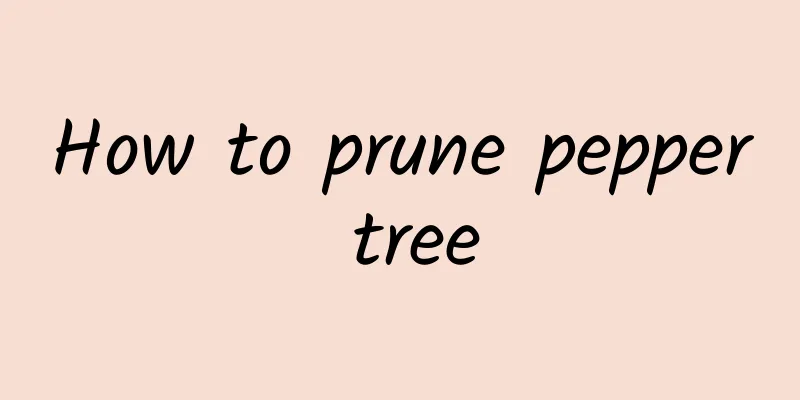How to prune pepper tree

When to prune pepper treesPepper tree can generally be pruned in spring, autumn and winter, but it is best to prune it in winter because the plant is in its dormant period and pruning will not cause much damage to the plant. For cuttings of the pruned branches of the pepper tree, you can choose strong, young branches with strong germination ability. The length of the cutting can be between 10 and 15 cm. The soil will mostly be well-ventilated and slightly acidic. Then, 2/3 of the length of the branch is cut into the soil, covered with a layer of film, and wait for rooting. How to prune pepper treesThe main pruning of pepper trees involves pruning branches. If the plant has yellow, dry branches, it needs to be pruned in time to reduce the plant's nutrient consumption and increase the plant's appearance. If the plant has diseased and insect-infested branches, it is necessary to focus on pruning and cut them directly from the base to avoid infecting other healthy branches. Some weaker branches and overly dense branches also need to be pruned. This can not only reduce nutrient consumption, but also improve lighting conditions, increase light transmittance, and facilitate plant growth. Pepperwood Pruning TipsThe pruning of pepper tree mainly involves pruning the branches. In spring, you can combine it with repotting, pruning old and rotten roots, and also combine pruning with shaping management to remove useless branches. Tips for pruning pepper treesIt is better to prune too late than too early : Prune in early spring before the trees sprout. The air temperature is high at this time, and the trees will sprout in a short time. There is no danger of withering of the leaves, so spring pruning is no more harmful than winter pruning. Cut thickly rather than thinly : Wait until the branches of the pepper tree have become lignified and have grown to a roughly predetermined thickness before cutting them, so that a better angle can be formed after the side branches grow out. Prune to fatten but not to thin out the branches : After pruning the branches short, no buds will sprout on the branch supports for a long time and the side branches will not grow vigorously. This is due to lack of fertilizer. Use more fertilizer as long as it does not cause fertilizer damage. Water and fertilize at intervals, and be careful not to use too much fertilizer. |
<<: How to trim the snow grass
>>: How to prune chestnut trees
Recommend
What fertilizer is best for growing ginger (what organic fertilizer is best for growing ginger)
Ginger is a common condiment and also has certain...
The meaning of the combination of sunflowers and baby's breath, and who should it be given as a gift?
1. Significance The combination of sunflower and ...
Is it good to soak wood ash in water and water flowers? What effect does wood ash have on flowers and plants?
Is it good to soak wood ash in water and water th...
Is Asparagus fern suitable for large or small pots?
Should I use a large or small pot for asparagus f...
How long is the growth period of Tremella fuciformis?
Introduction to Tremella Growth Wild Tremella has...
How to care for orchids in autumn and how to water orchids in late autumn
1. How to care for orchids in autumn Wind protect...
How often should Schefflera be watered in summer? Summer watering method
Schefflera affine watering frequency in summer Wh...
How to get seeds from cactus
Step 1: Collect the seed packets When collecting ...
How to choose durian
1. Pinch the thorns Only by choosing durian that ...
How to propagate crystal anthurium
1. Cutting Different varieties of anthurium have ...
Cultivation method of purple vine
1. Soil It is best to use loose soil for growing ...
What is the best fertilizer for pomegranate trees?
When to fertilize a pomegranate tree Pomegranate ...
Pictures of morning glory
Tips for growing honeysuckle The word "茑萝&qu...
Cycas revoluta growth environment conditions and characteristics
Cycas revoluta growth environment conditions and ...
What are the cultivation methods and precautions of butterfly plum
Growth habits of butterfly plum Butterfly plum li...









